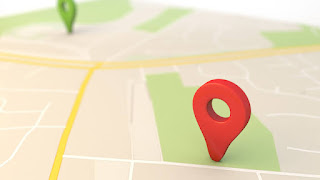With evolving technology, mobile industries have drastically changed in last two decades. If I ask you why is your smartphone is smar?, probably, the answer will be your smartphone can perform multiple tasks, the whole virtual wory is in your hand. But, the key component to make your smartphone smarter is sensors. Our smartphones have multiple sensors to do multiple functionality. And today we will discuss about what are those sensors, how do they work and what do they do.
The most common and important sensors are:
• Accelerometer
• Gyroscope
• Biometric sensor
• Ambient light sensor
• Magnetometer
• Navigation sensor
• Proximity sensor
We will discuss each of these sensors in detail and many other smartphones have more sensors, we will discuss them also.
1. Accelerometer
 |
| Your smartphone screen can automatically change orientation using accelerometer sensor. |
Accelerometer is the most important sensor in smartphone. As its name suggests, it used to measure acceleration or motion and orientation of a smartphone. Switching app from portrait to landscape mode, track your motion and orientation and in argument reality use this sensor. That's why it is also found in fitness band.
The sensor is made up of microscopic crystal structures that become stressed due to accelerative forces. The accelerometer then calculate the voltage coming from the crystals to figure out how fast your phone is moving and which direction it’s pointing in.
2. Gyroscope
Gyroscope is also another type of motion sensor, which mainly detect angular velocity or give information to software according to the orientation of your smartphone like, yow pitch and roll.
It is also used in many racing games, Whenever you play on your phone and tilt the screen to steer, the gyroscope rather than the accelerometer is sensing what you’re doing, because you’re only applying small turns to the phone and not actually moving through space.
It is also used in aircraft's altimeter to get accurate altitude, position and orientation. Today's modern gyroscope use MEMS (Micro-Electro-Mechanical Systems) gyroscopes rather than old age mechanical gimbal gyroscope.
3. Biometric sensors
Most of you are very much familiar with biometric sensors like fingerprint sensor and face recognition or iris scanner. This are the most important and most secure.
Fingerprint scanner are generally three type, Optical (scanning with light), capacitive (scanning with electronic capacitors), and ultrasonic (scanning with sound waves), most of the in-screen fingerprint sensor are optical sensor. But, ultrasonic is better and faster.
Cheaper smartphones don't have fingerprint reader. So, to recognise face, they take high resolution image and send to software, by software algorithms they recognise face. But, high-end smartphones an infrared sensor maps your face in three dimensions using dots, which are then compiled by software on the phone.
4. Ambient light sensor
Every smartphone users have experienced this sensor. Actually, when you go in darker room, your smartphone's brightness automatically falls or when you use your phone in sunlight, your phone's brightness automatically raises up. This is because your smartphone have ambient light sensor.
5. Magnetometer
 |
| Compass apps determine direction by using magnetometer. |
As the name suggests, magnetometer are used to detect magnetic field by varying voltage and current. It is also used in metal detector. Your smartphone shows directions and location using magnetometer and gps tracker.
However, the sensor doesn’t work alone for its primary purpose, which is inside mapping apps—it operates in tandem with the data coming from the phone’s accelerometer and GPS unit to figure out whereabouts you are in the world, and which way you’re pointing.
6. Navigation sensor
It is also one of the most important sensor in smartphones. Commonly, GPS sensor. GPS units inside phones get a ping from a satellite up in space to figure out which part of the planet you’re standing on. Actually, they don't use your mobile data that's why you can see your location while you are offline. But, modern-day GPS units inside smartphones actually combine GPS signals with other data, like cell signal strength, to get more accurate location.
But, GPS is not only navigation sensor, there are other sensors also like India's indigenously developed NAVIC sensor. Whic was introduced with Snapdragon 720G.
7. Proximity sensor
It is also found almost all smartphones from low range to high. When you pick a call and keep your phone upto your ears, automatically screen switched off, this is due to proximity sensor.
It is placed near the top of a phone, a infrared emitted by the sensor, when it reflects back by any obstacles it's sensor detects that ray and screen turned off. But, this works just for a few distance.
Proximity sensors are not only used in mobiles, it is also used in modern cars to avoid accident and parking metre. it also used in AR device and to measure distance.
8. LiDAR
LiDAR (Light Detection and Ranging) work in same principle like proximity sensor, it used to scann and measure the depth of a room or 3D mapping of any object. It is not so popular and used in rarely high-end smartphones. Like iPhone and OnePlus. It is used to measure distance between camera and the subject to take photos with natural depth of field.
For the first time it was introduced with iPad and now it is available on iphon, OnePlus and high-end smartphones of samsung.
9. IR blaster
It is only found in Xiaomi smartphones, it is actually work as a remote for remote control devices. It emits a infrared ray to the remote control devices to give command.
10. Barometer
Many phones, including the iPhone, also have a barometer that measures air pressure: it’s useful for everything from detecting weather changes to calculating the altitude you’re at.




This content is very nice very helpful.
ReplyDelete